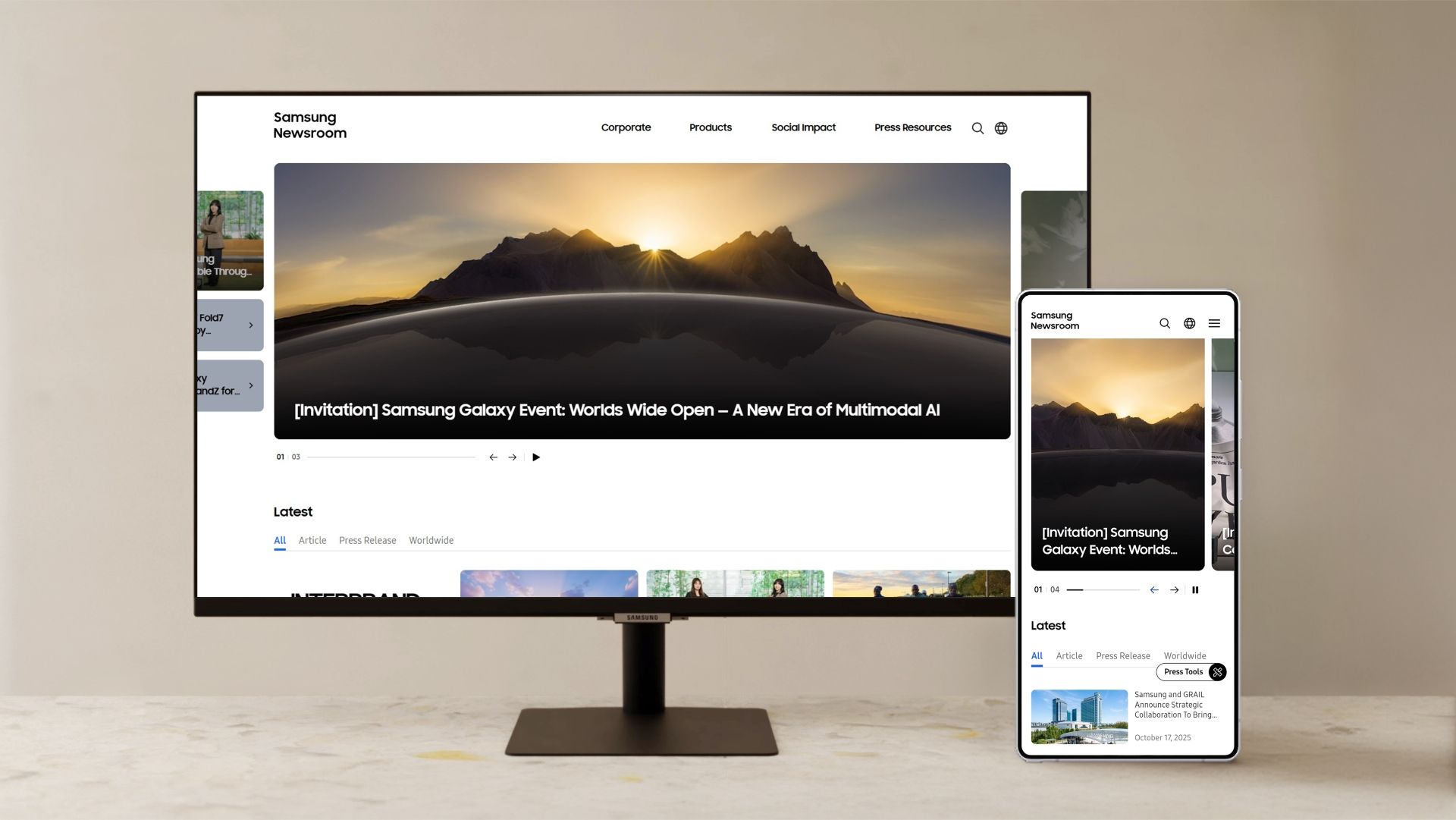Samsung just pulled off something most tech giants only talk about - completely reimagining corporate communications for the AI era. The company's newsroom redesign isn't just another website refresh; it's a full transformation into a video-first, AI-powered platform that could reshape how tech companies tell their stories. After a decade of traditional press releases, Samsung is betting big on multimedia storytelling.
Samsung just launched what might be the most ambitious corporate communications overhaul in recent memory. The tech giant's Samsung Newsroom has been completely rebuilt from the ground up, transforming from a traditional press release hub into a video-centric, AI-enhanced multimedia platform that puts visual storytelling at the center of corporate communications.
The timing couldn't be more strategic. As tech companies scramble to communicate increasingly complex AI and hardware developments, Samsung is betting that the future of corporate communications lies in immersive, visual experiences rather than dense text blocks. The redesigned platform features an expansive content carousel that plays videos directly without additional clicks, while AI-powered summaries help users quickly grasp key points from each article.
"The revamp aligns with shifting communication trends, reshaping the user experience around images and video to enhance message clarity and impact," according to Samsung's announcement. This isn't just corporate speak - the underlying technology represents a significant departure from how tech companies traditionally handle media relations.
The new platform introduces several breakthrough features that could influence how other tech giants approach corporate communications. A dedicated "Press Tools" menu consolidates high-resolution images, videos, and full article text into single-click downloads. Enhanced search functionality now includes tag-based and image-based search capabilities, with auto-suggestions and keyword highlighting that streamline content discovery.
What makes this particularly interesting is Samsung's integration of AI throughout the user experience. Each article now features machine-generated summaries, while the search function uses advanced algorithms to surface relevant content based on user behavior patterns. The platform also adapts visual content automatically across smartphones, tablets, and desktop computers, ensuring consistent experiences regardless of device.
For journalists and analysts who cover Samsung regularly, these changes represent a fundamental shift in how corporate information flows. Instead of hunting through traditional press release archives, media professionals can now access multimedia assets, regional content from Samsung offices worldwide, and contextual information through a unified interface.












